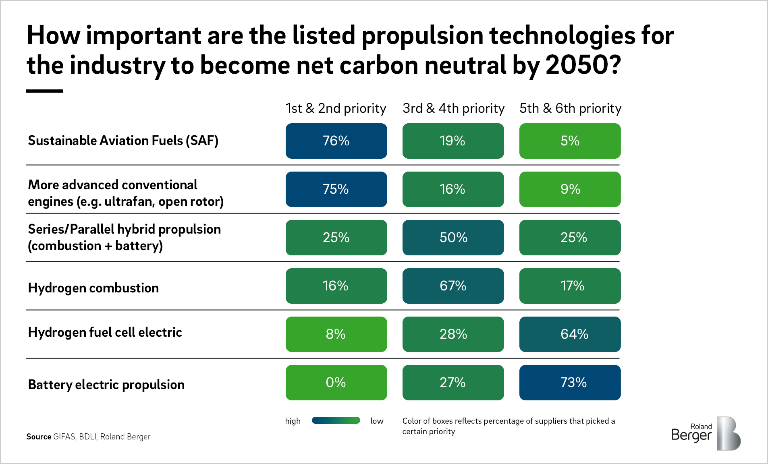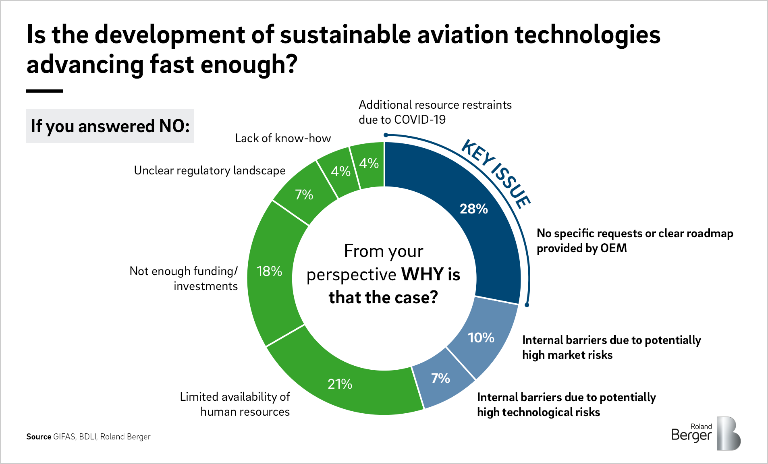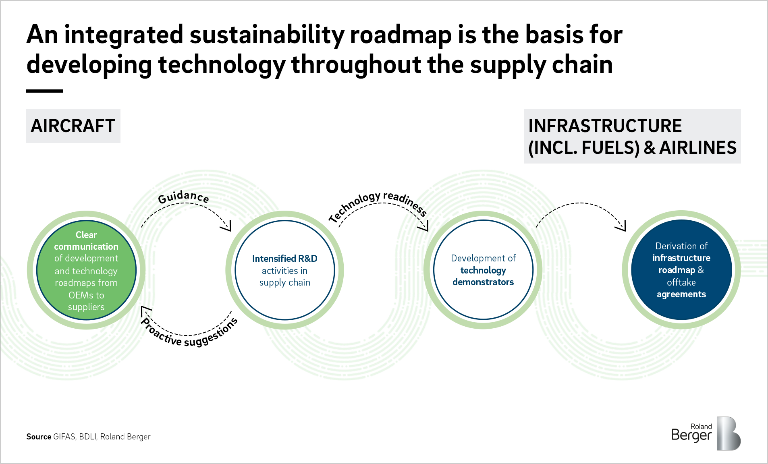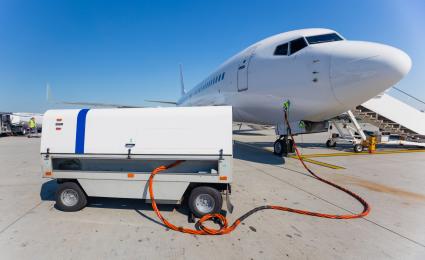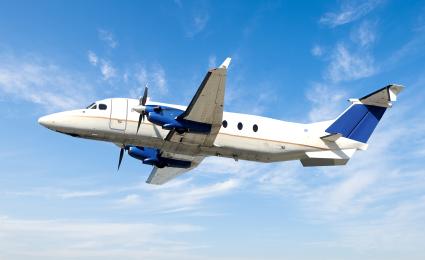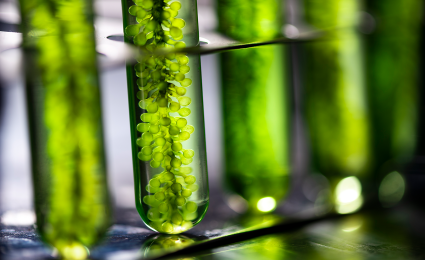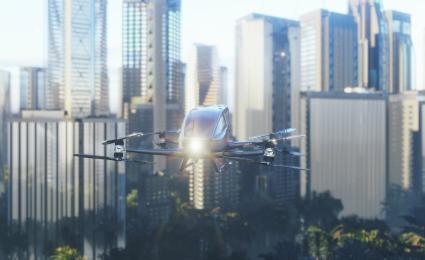Electric aircraft offer many advantages. But can they ever compete on cost? We designed a theoretical aircraft concept to find out if the future is electric.


Why greater supplier involvement is critical for green aviation
By Manfred Hader and Stephan Baur
A lack of supply chain coordination is seriously harming aviation’s sustainable development
If the aviation sector is to reach its target of carbon neutrality by 2050, it must leave the path of gradual evolution and embrace fundamentally new technologies. But a lack of market coordination, esp. along the industries supply chain, is preventing progress. To improve things, OEMs need to clearly communicate technology roadmaps with suppliers, while governments must commit to increased funding and clearer policies.

"OEMs must take a leading role and decide, in conjunction with governments and authorities, which specific technologies to pursue to make sustainable aviation a success story."
The aviation industry recognizes the need for greater sustainability. According to a recent survey of industry suppliers by Roland Berger and aerospace industries associations in Germany (BDLI) and France (GIFAS), 64% of participants are working to develop sustainable parts and systems. Some solutions are close to certification; other, more radical innovations are in the lab testing phase.
Systems suppliers are making the most progress: they are concentrating on electrification of onboard systems and other weight- or energy-saving solutions to improve energy efficiency. Aerostructure and interiors suppliers are also focusing on reducing weight as well as improving recycling loops for materials.
However, it is propulsion suppliers that have the biggest impact on aircraft sustainability. The majority are currently focusing much of their efforts on sustainable aviation fuels (SAF) in combination with more advanced conventional engines. Three quarters of the relevant survey participants said these were their first or second priorities. A quarter said hybrid propulsion was a main priority and just 16% said hydrogen. Electric propulsion, which is mostly suited to shorter flights and would therefore cover just a small percentage of industry emissions, is even less of a priority.
Sustainable aviation fuels are not enough
This places a major emphasis on sustainable aviation fuels in reducing aviation emissions. But these are a transitional aid rather than a game-changing solution, designated mainly to make today’s aircraft more sustainable for the next two decades. According to Dr. Dietrich Brockhagen, Founder and Managing Director of atmosfair, a German carbon offsetting and sustainable aviation NGO, it is hydrogen propulsion that holds the greatest potential to decarbonize flight. “SAF produced via ‘power-to-liquid’ methods use the scarce supply of green electricity with a lot less efficiency,” he explains.
To compound the issue, SAF goals do not go far enough, Dr. Brockhagen adds. “The goal of covering 2% of flights with SAF by 2030 is not enough to achieve a broad market adoption of SAF by 2050. The technology is still in its infancy, with many technological challenges still ahead. The ship to provide all air traffic with SAF by 2050 has already sailed.”
Poor coordination = slow progress
This touches on a wider issue within the industry – the development of sustainable aviation technology is moving much too slowly. And the industry knows it: 63% of those suppliers surveyed felt sustainable aviation technology is not advancing fast enough in their respective companies.
The reasons for this vary. More than a quarter (28%) of respondents cited the absence of a clear roadmap from OEMs; 21% felt a lack of investment was most to blame, just ahead of limited human resources (18%).
Unfortunately, these supplier struggles are just the tip of the iceberg. The entire aerospace sector is currently falling short in driving the industry towards greater sustainability. Market participants are highly dependent on each other to develop new technologies, and the required investments to reshape the industry are huge – if the industry cannot act together, development stalls for everyone.
For suppliers, a lack of external guidance and overemphasis on SAF is limiting technological development. Airframe and engine OEMs, meanwhile, are currently following different technological roadmaps, despite the need for a more unified approach. To compound the problem, governments are struggling to provide clear, internationally aligned guidance. And without direct demand or clear roadmaps, infrastructure providers have little incentive to invest in sustainable infrastructure such as hydrogen fueling capacities.
Why OEMs must take the lead
So, what needs to be done? While it’s clear that this is an industry-wide issue, we believe OEMs must take a leading role and decide – in conjunction with governments and authorities – which specific technologies to pursue. Then they must communicate detailed technological roadmaps quickly and clearly across the entire sector, with a specific focus on their suppliers. This would help to intensify R&D efforts throughout the supply chain and drive faster technological development, as well as allowing a more effective allocation of funding. In turn, this would enable a clear, international infrastructure roadmap for areas such as refueling once technologies are ready.
2050 may seem some way off but the long timelines in the aviation industry mean it must act now to stand a realistic chance of hitting its targets. Suppliers are willing and able to take on a more active role in improving sustainability, but the onus is on OEMs to involve them more effectively.
Register now to receive regular insights into Aerospace & Defense topics.


